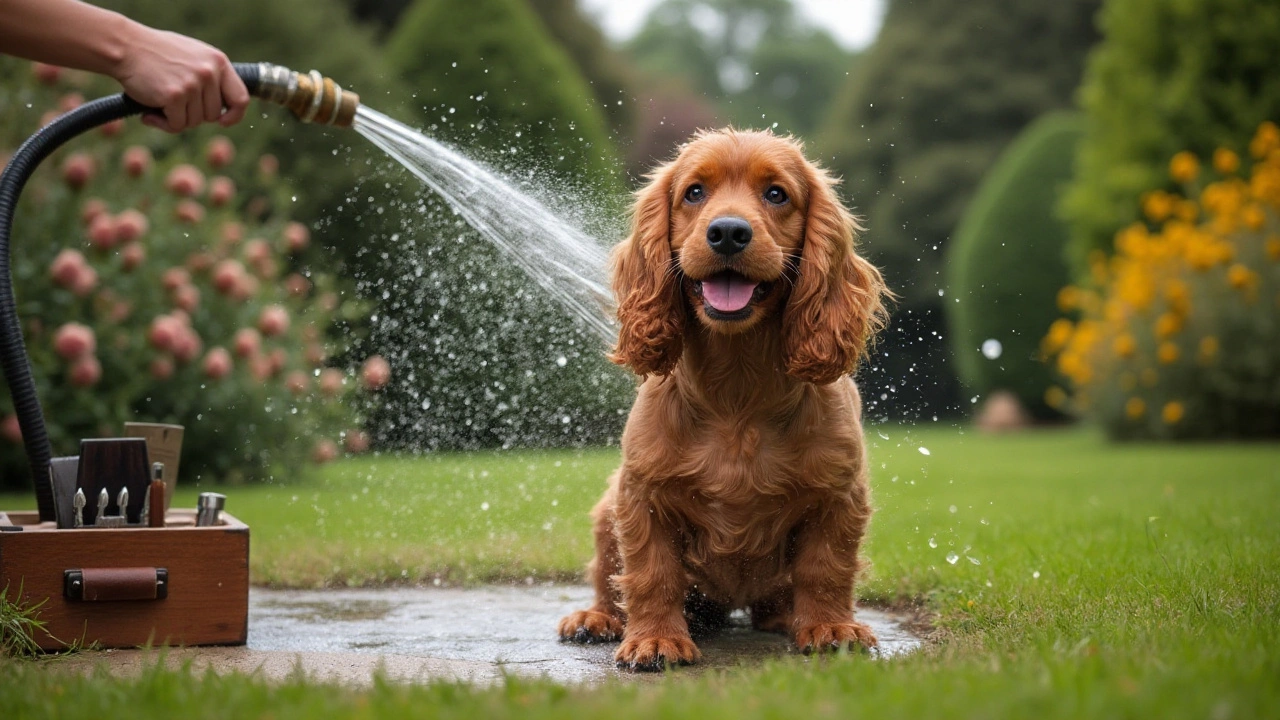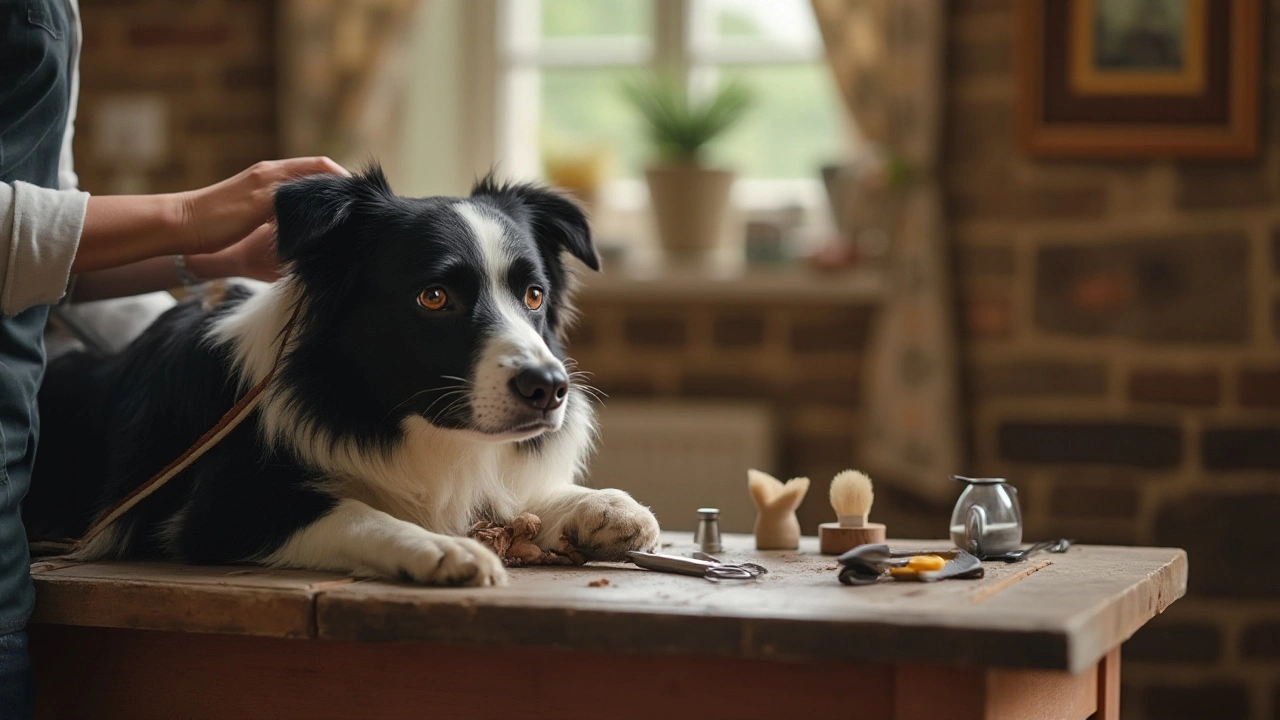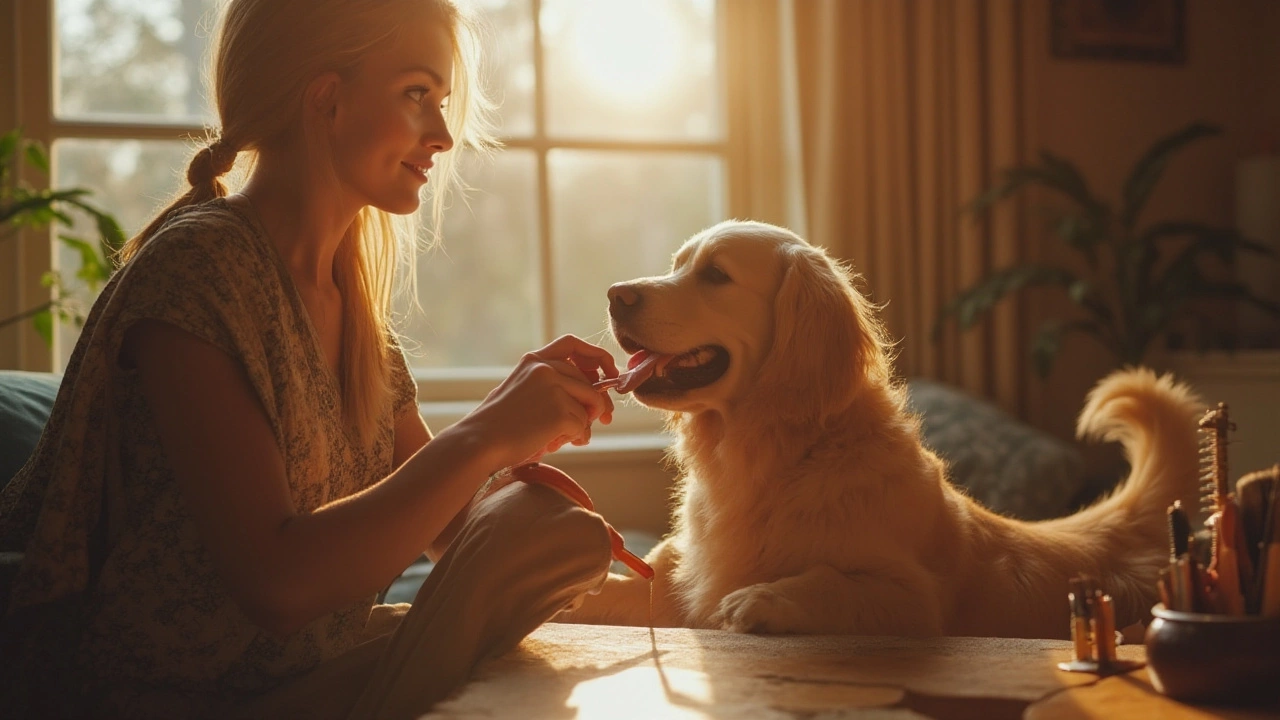Grooming your dog is more than just an activity; it’s a bonding experience that can also help keep your pup healthy and happy. Understanding the right steps to take during a grooming session can make a world of difference. While each dog’s grooming needs may vary, having a reliable routine can make the process smoother and more enjoyable.
Knowing where to start and what to do next is key. It’s more than just making your dog look good – it helps with shedding, keeps their skin healthy, and can even prevent health issues. Embrace the practices that let you care for your dog in comfort and style.
Preparing for Grooming
Getting ready to groom your dog is the important first step in offering effective dog grooming. Start by gathering all the necessary supplies so you won't have to look for anything mid-session. This includes brushes, combs, shampoos, towels, clippers, and nail trimmers. Before diving headfirst into the grooming process, identify your dog's coat type, as each dog may require a different brush or comb depending on their fur. Also, make sure to select a suitable shampoo that's specifically developed for your dog's skin. If your dog has skin allergies, sensitive skin, or any specific needs, consult your vet for the best option.
Before you start grooming, create a comfortable environment for your pet. Choose a quiet room where your dog feels safe to minimize the chances of distractions or stress. You might want to play some calming music or offer treats to soothe them as you prepare. Consider your dog's mood too; if they're overly energetic, they might not be in the right mindset for a relaxing grooming session. A quick walk or some playtime before grooming could reduce their energy levels, making them calmer during the process.
One insightful piece of advice comes from
“The Dog’s Mind: Understanding Your Dog's Behavior” by Bruce Fogle, in which the author emphasizes the importance of recognizing canine body language. This approach helps pet owners understand whether their dog is anxious, stressed, or content, thus tailoring the grooming process to their furry friend's comfort. In the end, understanding your dog's emotional cues can foster a more positive grooming experience for both of you.
Additionally, consider your grooming station setup. Ensure the table or area where you'll be grooming is not only comfortable for you but also secure for your dog. Slippery surfaces can be dangerous, so using a slip-proof mat can provide stability and peace of mind. Regular grooming not only helps maintain your dog's appearance but also positively impacts their health. Frequent inspection of their body during grooming sessions can highlight any potential issues, like lumps, bumps, or skin conditions, meaning you can take action early. Such diligence underlines the broader benefits of routine pet care.
Checklist of Essential Supplies
- Brushes and combs suitable for your dog's coat type
- Dog-friendly shampoo and conditioner
- Towels for drying
- Clippers and scissors for trimming and styling
- Nail trimmers suitable for dogs
- Safety mat to prevent slips
- Treats for positive reinforcement
Establishing a solid preparation routine can make the grooming task less daunting and more enjoyable for your furry companion. Once you’ve checked off the items on your list and set a calm environment, you’ll be well on your way to providing a professional grooming experience right from the comfort of your home. Take it step-by-step and remember—patience is key. Happy grooming!
Brushing Techniques
Brushing your dog is not just about keeping their coat looking shiny and beautiful; it is a crucial part of dog grooming that greatly contributes to your pet's health. Regular brushing helps to remove loose fur, dirt, and dander while also preventing matting, which can be painful for dogs. It also gives you the opportunity to check for any unusual signs on the skin like lumps or injuries that might require a vet's attention. When brushing, choosing the right tool for your dog’s coat type is essential. For example, while a slicker brush is excellent for dogs with long or double coats, a bristle brush might be more suitable for those with shorter fur.
The technique you use while brushing depends on the type of fur your dog has. For a general rule, always brush in the direction of the hair growth, starting from the head and gradually moving towards the tail. This method minimizes any discomfort and helps in removing more undercoat. For heavy shedders, regular brushing can dramatically reduce the amount of loose fur that ends up on your furniture and clothes. Pet care experts often recommend brushing short-haired breeds weekly, whereas long-haired breeds might benefit from daily attention. Consistency is key, as it not only keeps your dog looking their best but also fosters a happy, relaxed demeanor during grooming sessions.
Grooming professional Sarah Holloway once said, "A well-brushed dog is a happy dog, free from mats, and least likely to experience skin issues like dermatitis."
Another important aspect to consider is desensitizing your dog to the grooming tools. Before starting a brushing session, let your pup sniff and inspect the brush. Reward them with treats as positive reinforcement when they stay calm as you begin to brush through their coat. It is especially important to be gentle around the sensitive areas, such as ears, belly, and tail. Watch for any signs of discomfort such as flinching, and adjust your technique accordingly. From time to time, use your fingers to gently untangle stubborn knots before they develop into mats.
An interesting fact many pet care experts agree on is the calming effect regular brushing has on dogs. Including it as a part of a regular routine can reduce stress and anxiety, making it a beneficial ritual for your canine's mental health. Consider incorporating brushing into a set time of day, like after their evening walk. This helps create a connection and builds anticipation that makes your dog willingly look forward to this moment of care. Having a simple routine in place like that is not only beneficial to them physically but also emotionally. This simple, yet strategic approach to dog grooming will undoubtedly have your dog prancing around in their best coat!

Bathing Your Dog
Bathing your dog involves more than just a quick rinse. It is a comprehensive process that not only keeps your pet clean but also promotes their overall health. Many owners may not realize how bathing aids in the removal of dead hair and skin, helping to prevent any unwanted matting or tangling in breeds with longer coats. One way to start is by choosing the right products. Using a high-quality shampoo that's specifically designed for dogs ensures that their skin's natural oils are preserved, unlike human shampoos which could disrupt their skin's pH balance. To properly wet your dog, it's important to use lukewarm water as hot water could be harsh on their sensitive skin.
It’s essential to take a methodical approach during bath time. Initiates by thoroughly wetting your dog’s fur from neck to tail. You can then apply shampoo, gently massaging it into their fur with soothing strokes to ensure you break down dirt. Be cautious around the head and ears, using a damp sponge to clean their face to avoid water and soap getting into their eyes and ears. Rinse thoroughly, making sure no product residue remains as it can lead to irritation. A recurring issue in the pet world is the infamous "wet dog smell," which often results from not rinsing effectively.
Choosing the Right Time
Determining when to bathe your dog is also a crucial step. Although it might be tempting to frequently bathe them when they appear dirty, excessive washing can strip essential oils from their coat. For most dogs, a bath every four to six weeks suffices unless they have skin conditions that require more frequent attention. Interestingly, the frequency is sometimes influenced by the breed, as dogs with smoother coats may require fewer baths compared to those with dense or curly coats. The environment your dog is frequently in also plays a role; for instance, if you live amidst a sandy area like a beach, more regular bathing might be necessary.
According to the American Kennel Club, "Proper care of your dog's coat and skin will enable them to live a healthier and happier life."
After Bathing
Once bath time has concluded, drying your dog is another significant aspect. Towel drying is the most straightforward method, pressing gently rather than rubbing can prevent any tangles or mats. In cases where a blow dryer is needed, use it on a low, cool setting to prevent overheating and to reduce stress. An interesting fact: it’s observed that many dogs instinctively shake off the excess water, which can actually remove up to 70% of the moisture from their coat. Giving your dog a treat after bath time can be a smart way to reward them, associating the experience with something positive. Observing your dog’s skin and coat for any changes during and after the bath can also alert you to any potential health issues early on.
Drying and Clipping
Drying your dog properly is crucial after a bath. It's an essential step in the dog grooming process that goes hand-in-hand with clipping. Proper drying helps prevent skin irritation, especially for dogs with thick coats that retain moisture. Begin by using a clean, soft towel to blot away as much water as possible. Avoid rubbing vigorously as this can tangle the fur. If your furry companion doesn't mind the noise, you might consider using a low-heat hairdryer to expedite the process, keeping the dryer moving constantly to avoid hot spots on the skin. For dogs with longer hair, you'll find a pet-safe blow dryer with variable speed settings to be a helpful tool. "Using a blow dryer not only speeds up drying but also allows you to detect any irregularities in your dog's coat or skin," suggests Dr. Lisa Haeusler, a veterinary dermatologist from Auckland.
Once your canine friend is thoroughly dried, it's time to start clipping. Clipping isn't just about style; it can also prevent the hair from trapping dirt and debris that could otherwise lead to irritations. Invest in good quality clippers designed specifically for pets. They usually come with adjustable blades, allowing you to choose the right length based on your dog's breed and coat type. Normally, it's best to start clipping from the back of your dog's neck, moving in the direction of hair growth. This helps maintain an even length and reduces the stress on the dog. When working around sensitive areas such as the face, ears, and paws, extra care is essential.
For many, dog grooming, particularly clipping, may seem daunting at first, but with time it becomes a routine as familiar and comforting as walking with Rex in the local park. If your dog seems particularly uncomfortable or if you're unsure, don't hesitate to seek guidance from a professional groomer. Remember, both you and your dog will have a more pleasant experience if you approach this task calmly and with plenty of patience.

Finishing Touches
After going through the main steps of grooming, it's time to add the finishing touches that ensure your dog not only looks their best but also feels comfortable. These final details can make a significant difference, and they form a crucial part of any grooming routine. Because grooming is about more than just appearance, it’s worth taking the time to do it right.
One of the first things to address during this stage is your dog's nails. Keeping them trimmed helps prevent any discomfort or injury. Use a nail clipper designed specifically for dogs or consider a nail grinder for smoother edges. Pay close attention while handling your dog's paws, as some dogs may react to the sensation differently. If you're unsure about where to cut, consult a professional groomer or veterinarian to understand how to avoid cutting into the quick, which can be painful for your dog.
Maintenance of a pet's paws can, "reduce the risk of painful splits and snags," says Dr. Emily Kitchell, a renowned veterinarian with decades of experience. This simple step can also offer longer walks and increased agility.
Next, check your dog's ears for any signs of infection or debris. Regularly cleaning can prevent ear infections, which are common in certain breeds. Use a gentle ear cleanser and a cotton ball to wipe away dirt. Avoid using cotton swabs which can push dirt further into the ear canal. Dogs with droopy ears or those who love water may require more frequent cleanings to keep ear health in check.
Freshening Up
After completing the ear cleaning, consider using a dog-friendly fragrance or grooming spray to give your pet a lovely smell. Opt for natural sprays that are free from chemicals and artificial fragrances, as they’re less likely to cause allergic reactions. These products can add a soft sheen to your dog's coat, enhancing their glossy appearance. Always follow the product instructions to avoid any skin irritations.
Brushing your dog one final time helps to remove loose hair and ensures an even distribution of natural oils. This step leaves the coat looking radiant and keeps the hair neat until the next grooming session. Consider using a detangler if your dog has longer fur prone to matting. This will also make it easier to manage their coat on a regular basis.
- Trim nails carefully to avoid quick
- Gently clean the ears with appropriate solutions
- Apply natural, safe fragrances for a fresh scent
- Final brush to remove lingering loose hair
